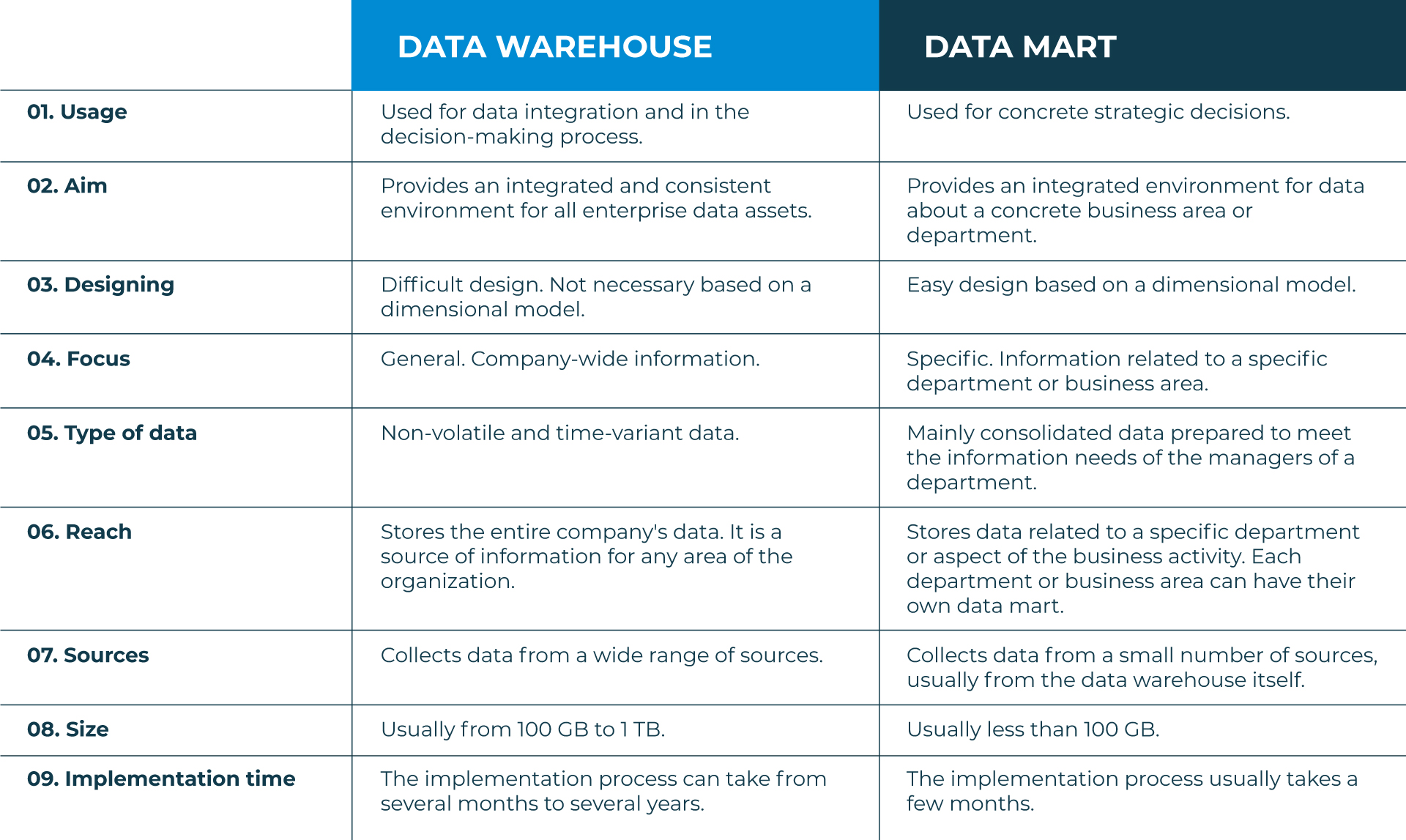What are the differences between a data warehouse and a data mart?
What are the differences between a data warehouse and a data mart?
The main difference between the two databases is their size and approach. While a data warehouse serves as the global database of a business and stores data about any aspect of the company, a data mart stores a small amount of data related to a specific business department or project. Similarly, a data warehouse collects data from a wide variety of sources, whereas a data mart typically collects data from the central database, the data warehouse. This, in turn, means that a data warehouse has a much larger storage capacity than a data mart and a much more complex and difficult to design architecture. In addition, the implementation process of a data warehouse is more complex and time-consuming —it usually takes several months or even years— while that of a data mart can be solved in a few months since it gathers a much smaller amount of data and it has a simpler structure.
Carrying on with the example of the educational system, we could say that a data warehouse is the place where all the documents of an educational center are stored, while a data mart would be the place where each teacher or group of teachers keep the documentation relevant to their subject.
Below, we explore in more detail the main distinctions between a data warehouse and a data mart:

Referring to the main differences between a data warehouse and a data mart, while a data warehouse is used as an organisation's central data repository, a data mart is a more specific data warehouse.
-
A data warehouse facilitates the data integration and general business decision making process of the company, while a data mart assists in more specific strategic decision making.
-
The goal of a data warehouse is to provide an integrated and consistent environment for all of the company's data assets. In contrast, a data mart is an integrated environment for data pertaining to a specific business department.
-
In other words, a data warehouse has a general approach and stores information and data relating to the entire company. In contrast, a data mart has a specific focus and integrates information from a specific business area or department.
-
The design process of a data warehouse is complex and does not have to be based on a dimensional model. On the other hand, the design process of a data mart is easier and is always based on a dimensional model.
-
In terms of data types, a data warehouse contains detailed data that is non-volatile in structure and can vary over time. A data mart, on the other hand, mainly contains consolidated and ready-made data to meet the information needs of department or business area managers.
-
A data warehouse and a data mart are quite different in scope. A data mart is a narrow database, in the sense that it stores data relating to a particular department or aspect of the business. Each department or business area can have its own data mart. A data warehouse, on the other hand, stores data linked to the entire company and to any aspect of the business activity. It acts as a source of information for any area of the organisation.
-
In this sense, a data warehouse collects data from a large number of sources. Typically, a data mart stores data from a small number of sources and, in fact, the main source of origin of a data mart is usually the central data warehouse.
-
data warehouse typically has a size or capacity ranging from 100 GB to 1TB. In contrast, a data mart typically has a capacity of less than 100 GB.
-
Finally, a data warehouse requires an implementation period of several months to several years. In contrast, a data mart can be implemented in a few months.